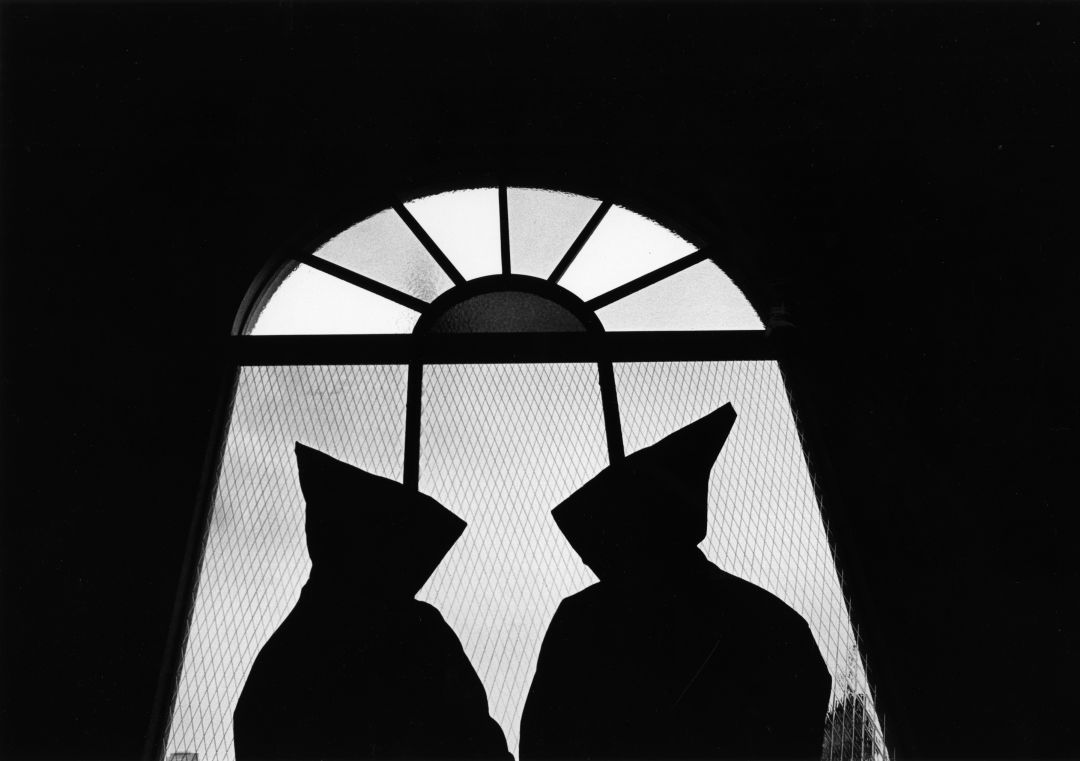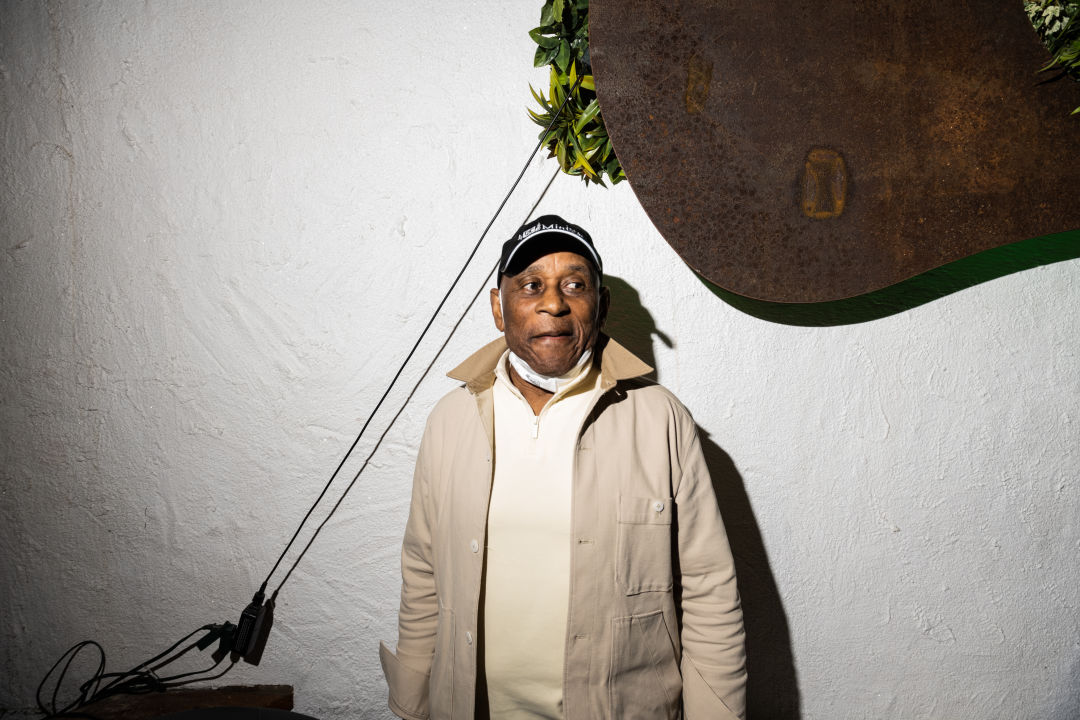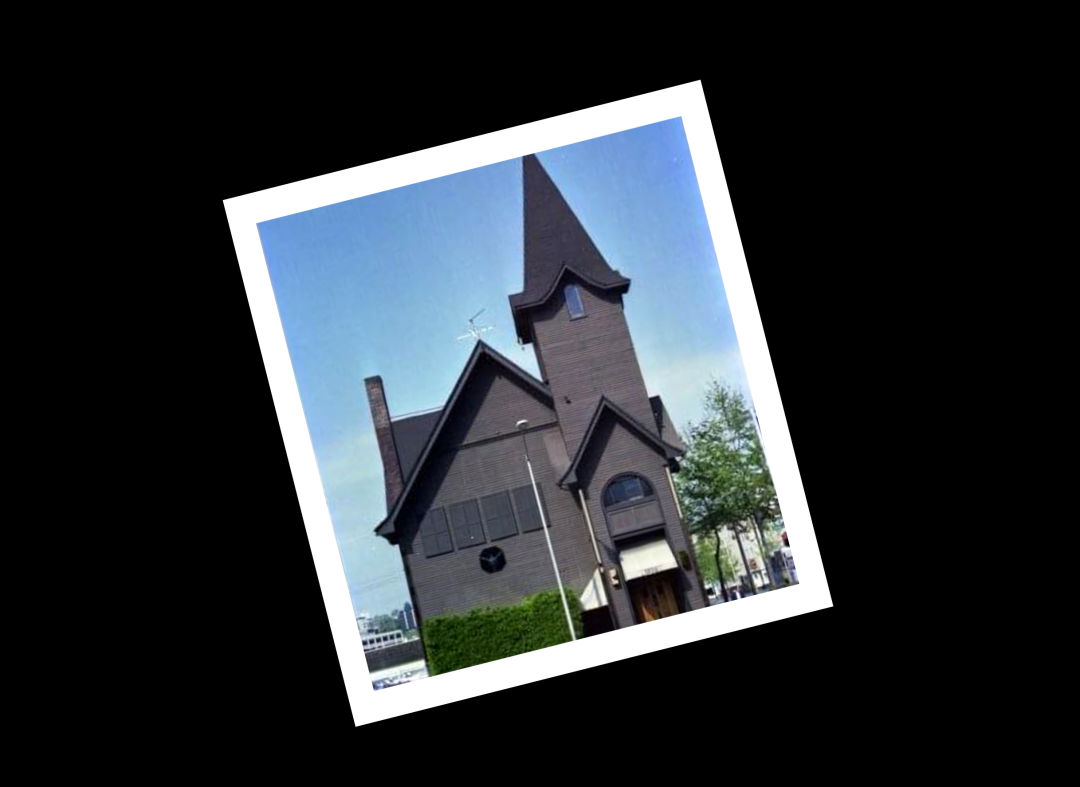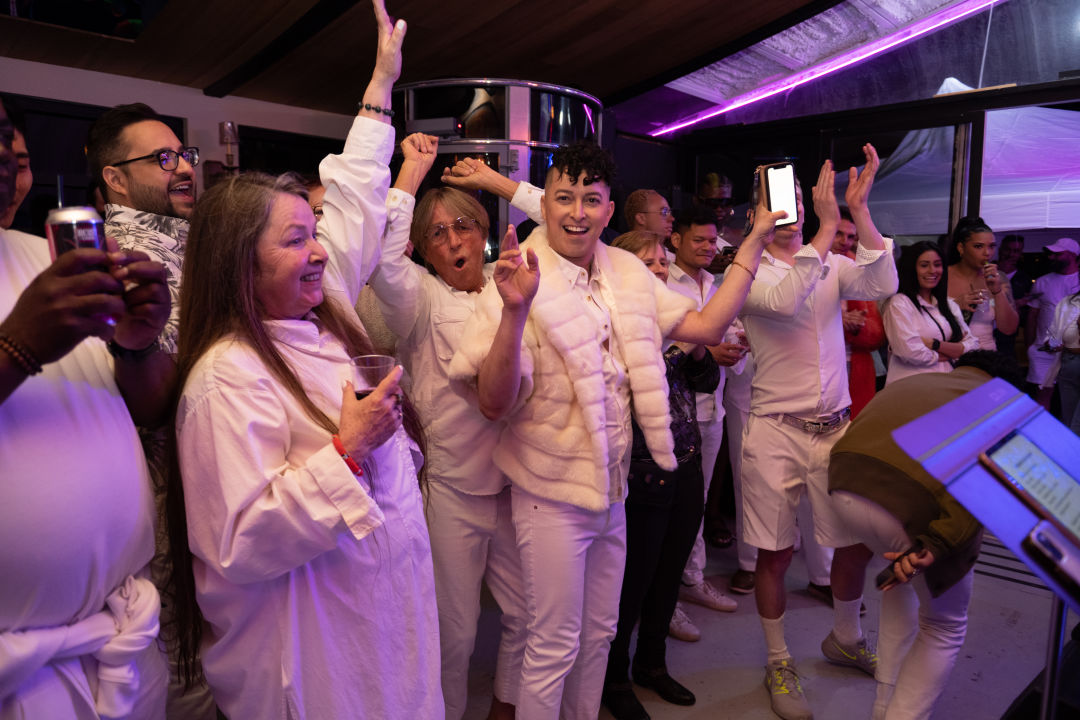An in-floor screen in George Freeman’s home flashes Monastery throwbacks.
Thwop. Thwop. Thwop. The whir of a helicopter rotor slices through the air, disrupting the night sky above the brown clapboard church on Boren Avenue. A disc jockey dressed in monks’ robes waits to emerge as the chopper eases down for a landing. Spotlights beam upward. Somewhere from within the building’s cavernous depths, Mozart’s Fugue in D Minor filters out onto the street to the line of people snaking down the block.
With all that, on May 13, 1977, one of Seattle’s most controversial dance clubs opened its doors.

The Monastery attracted lasting devotion and seething disdain during its tumultuous eight-year run. What started as an all-ages disco, especially for gay youth, later morphed into a church and de facto homeless shelter. Then in 1985, led by King County prosecutor Norm Maleng, Seattle officials issued a civil abatement against the Monastery, alleging drug use, prostitution, and underage drinking as reasons to shut it down. The building was demolished, and the city passed the Teen Dance Ordinance that same year to deter copycats from ever sprouting up again.
Monastery regulars, though, remember the club as a haven for the queer community, a family, a place to be yourself. “The Monastery saved my life,” more than one told me at a 45th anniversary party. “George saved my life.”
That “George” is George Freeman, now 83, of the Universal Life Church and “Science is God” house. Back then, the nightclub owner and event promoter had just moved to Seattle from New York City when he came across an empty Methodist church on the corner of Boren and Stewart. It had a steeply pitched roof, stained glass windows, and a towering steeple. “It had a big sign: ‘For Rent,'” Freeman says. “You know exactly where I went after that.”

Lease in hand, Freeman remade the place of worship into a church of dance. Flashing lights and disco balls. A massive dance floor with “the best sound system you could ever find.” A hot tub and a tiny 30-seat movie theater.
“The latest we ever closed was 9am,” Freeman says. “These people were walking out, sweating, their clothes were a mess, their hair’s dripping wet. They partied the whole night away and they had a wonderful time. They became family.”
The church thing was an accident. People saw the building, Freeman says, assumed it was an actual church, and knocked on the door for help. “We ended up with homeless people. We ended up with gay people. They were thrown out of their houses, excommunicated from the churches, beaten up by their friends and family, and on the verge of suicide…. That’s how we evolved into a church where gay people had a right to be who they were.”

In May 1979, he made it official, becoming ordained and obtaining a certificate of association with the Universal Life Church. But the trouble, which had started shortly after the club opened, only escalated from there.
Back in October 1977, the police raided the Monastery and arrested Freeman, alleging he dispensed alcohol without a liquor license and served minors. More police raids over the ensuing years led to a back-and-forth volley of charges, arrests, denials, and appeals. After the Monastery became a church, Freeman asserted, he was allowed to administer sacramental beverages to the congregation. Officials saw it as a way to shirk state liquor laws; he saw it as targeted discrimination. “The gut issue is that I’m black and I’m queer,” Freeman said in a 1983 Seattle Daily Times article.
Then in 1985, Norm Maleng played his ace. The prosecutor filed a civil abatement action to close the Monastery for good. Undercover police alleged “blatant drug trafficking, liquor-code violations, and licentious conduct involving mostly under-age clients,” the Seattle Times reported on April 29, 1985.

Freeman denies many of those claims as hearsay, noting the most damning charges were always dropped. “In those days, you go to the Coliseum, the Paramount, any concert, and everybody was stoned,” he says. “It was targeted prosecution. They never went after straight nightclubs.”
After a 10-day trial, Superior Court Judge Gerard Shellan granted a permanent injunction against Freeman and the Monastery, labeling it a public nuisance. The building was demolished, and the Teen Dance Ordinance smothered the burgeoning youth dance scene in Seattle for the next 17 years—it was eventually replaced by the All-Ages Dance Ordinance in 2002.
Freeman continues to defend the Monastery’s legacy to this day. “Nobody died at the Monastery. Nobody got cut at the Monastery. It was eight years that we were there, and that family still lives on today.”
On May 13, Freeman threw a 45th anniversary party for the Monastery at his Capitol Hill home. There was a check-in desk and paid security and cases of Kirkland champagne (Freeman’s favorite brand). The all-white dress code was either followed to abandon or abandoned altogether. And by 10pm, the music was throbbing, every space thick with people.
One-time Monastery regulars chatted and danced alongside newcomers, many of whom had heard about Freeman and these parties from a friend. Who, like so many in the generation before them, just wanted some place where they could finally belong. Who, here with these people, could finally just be.








